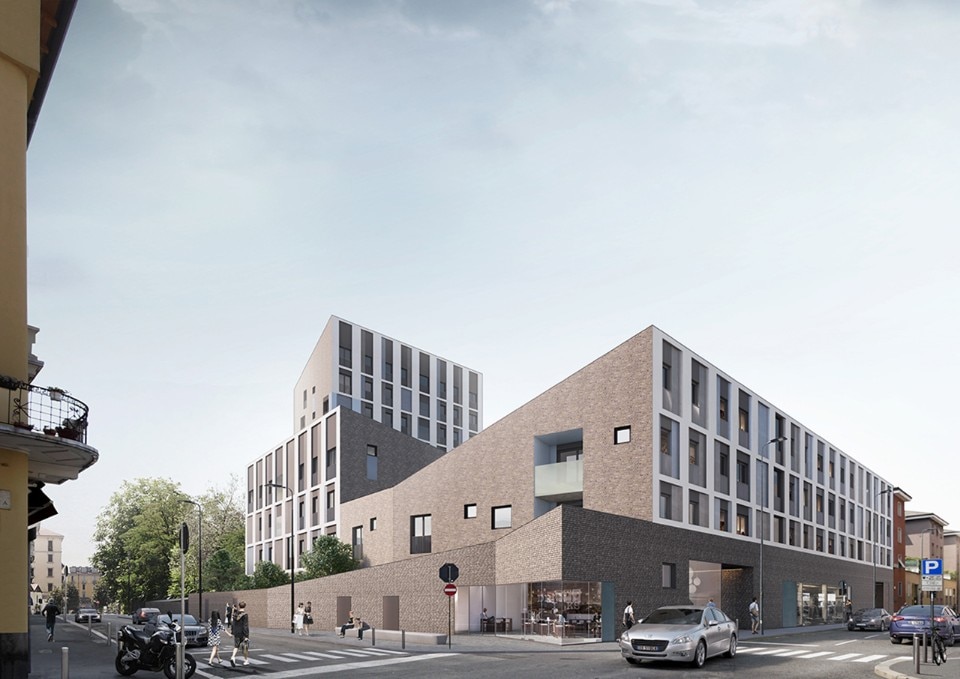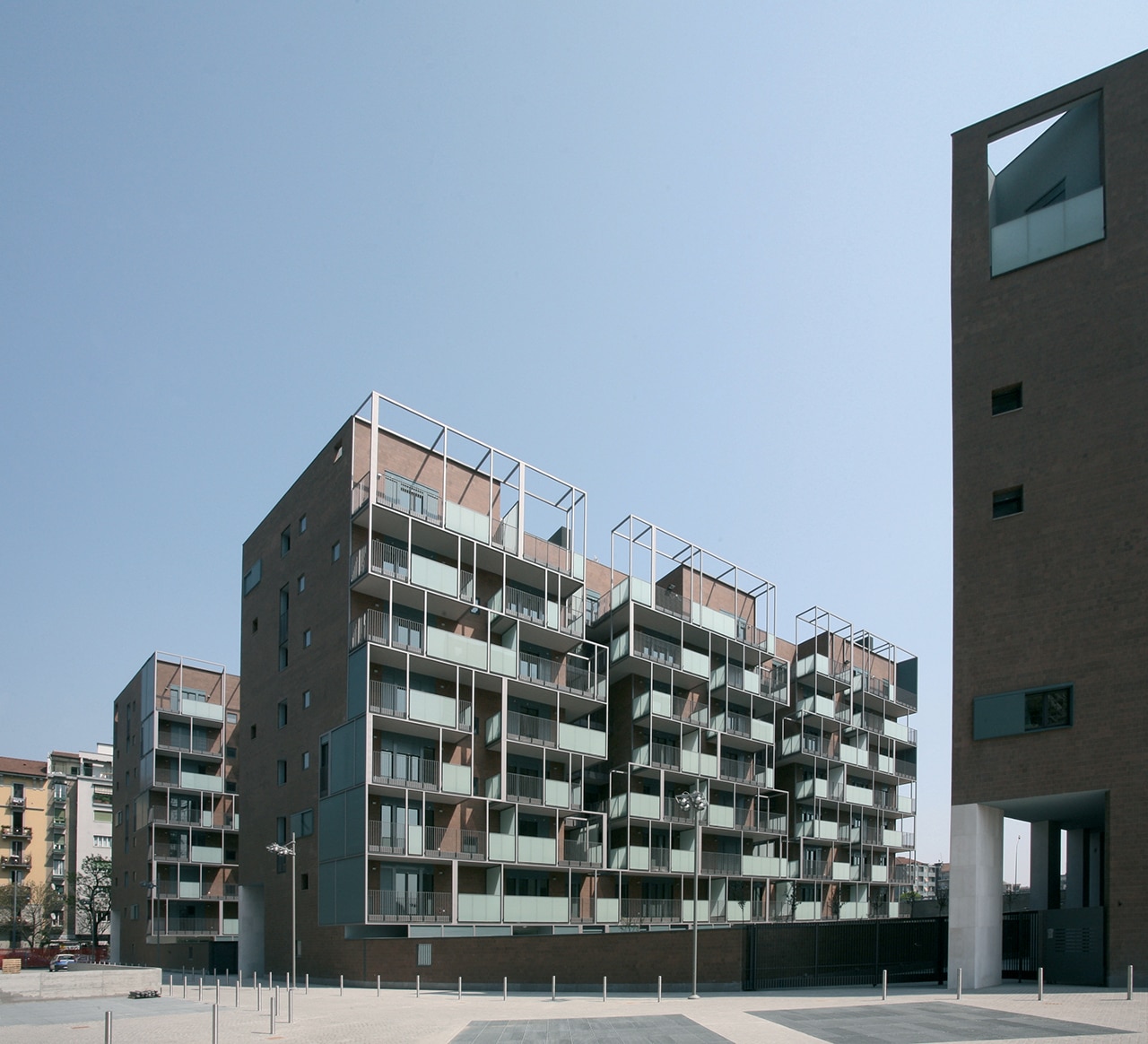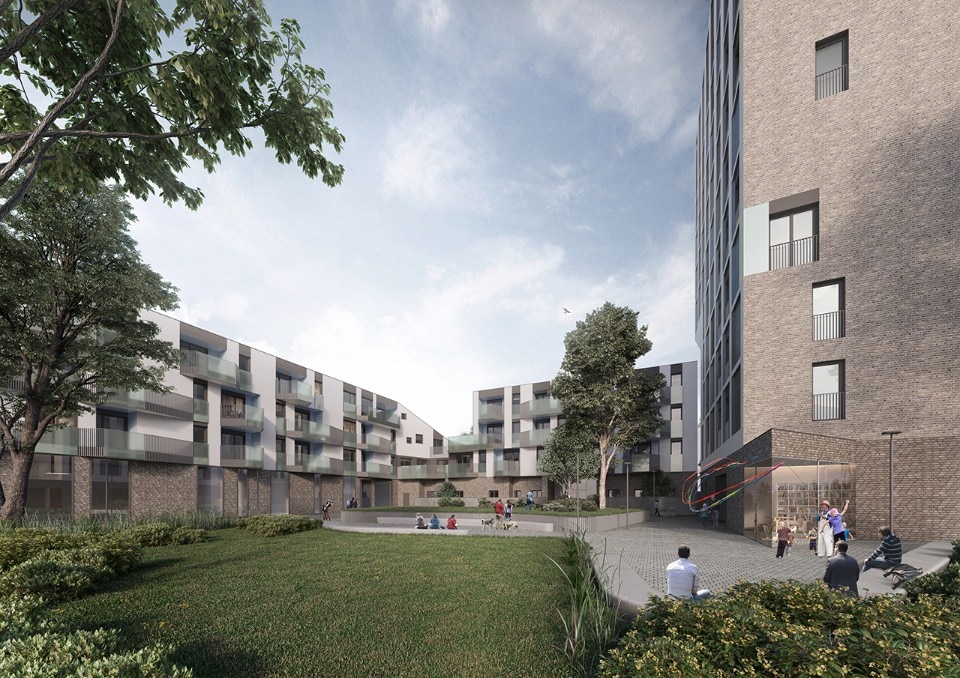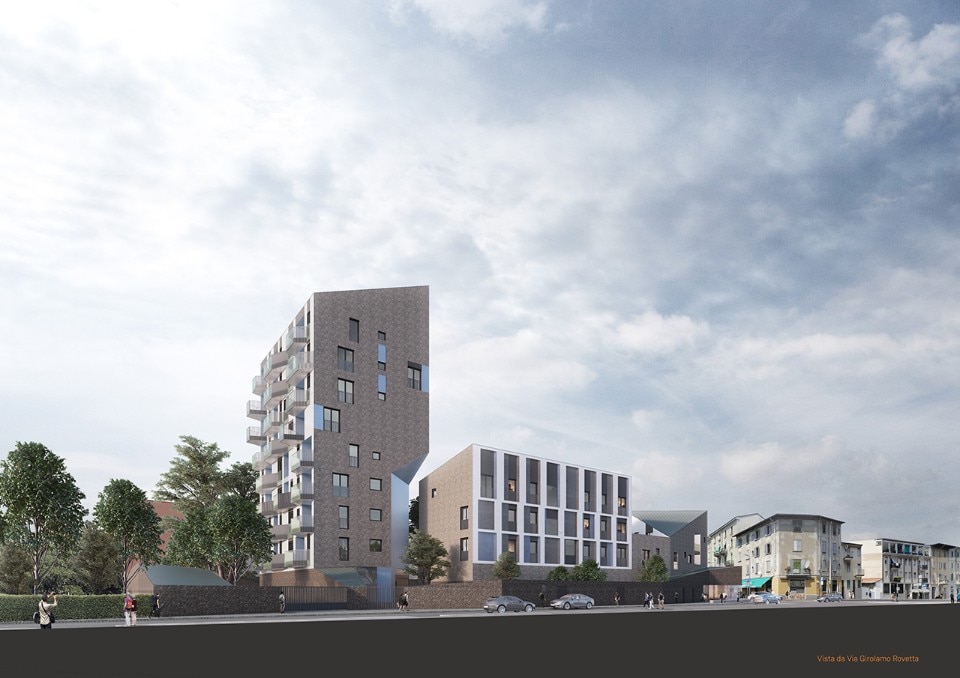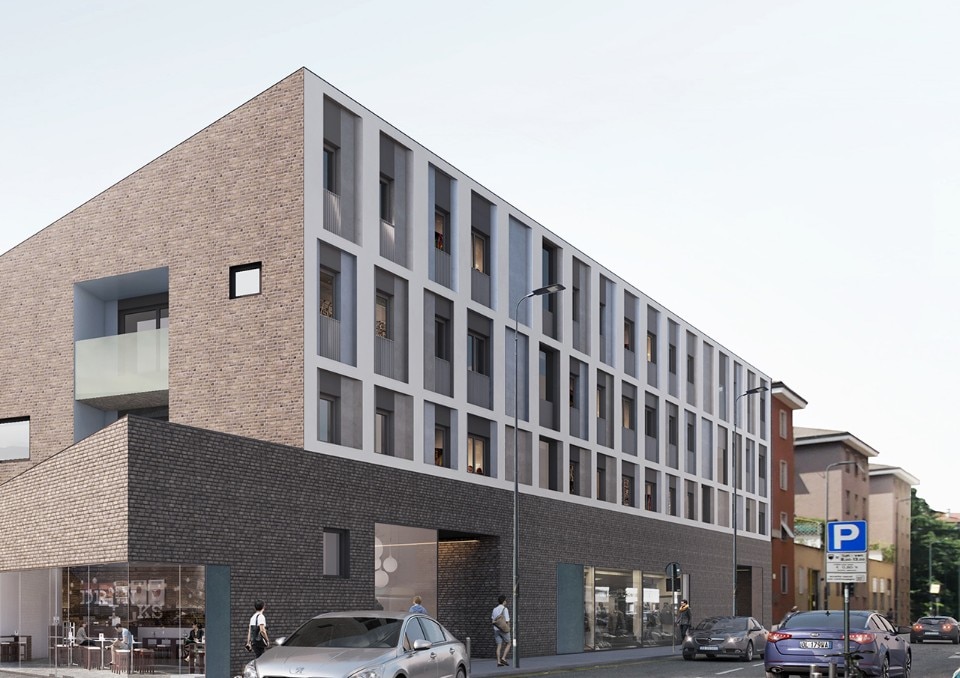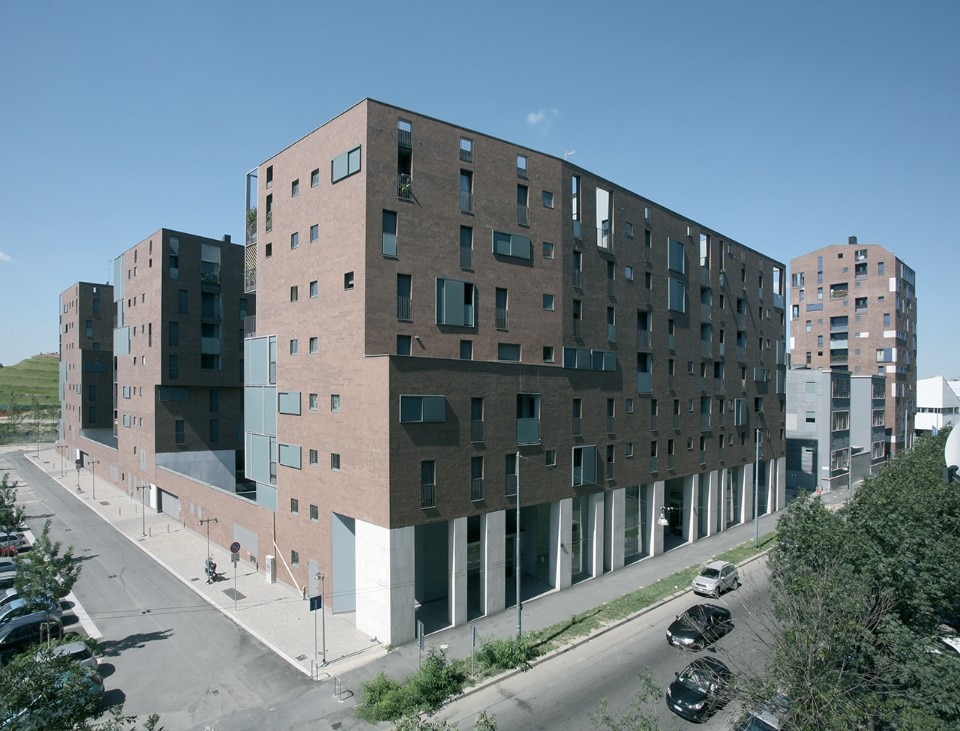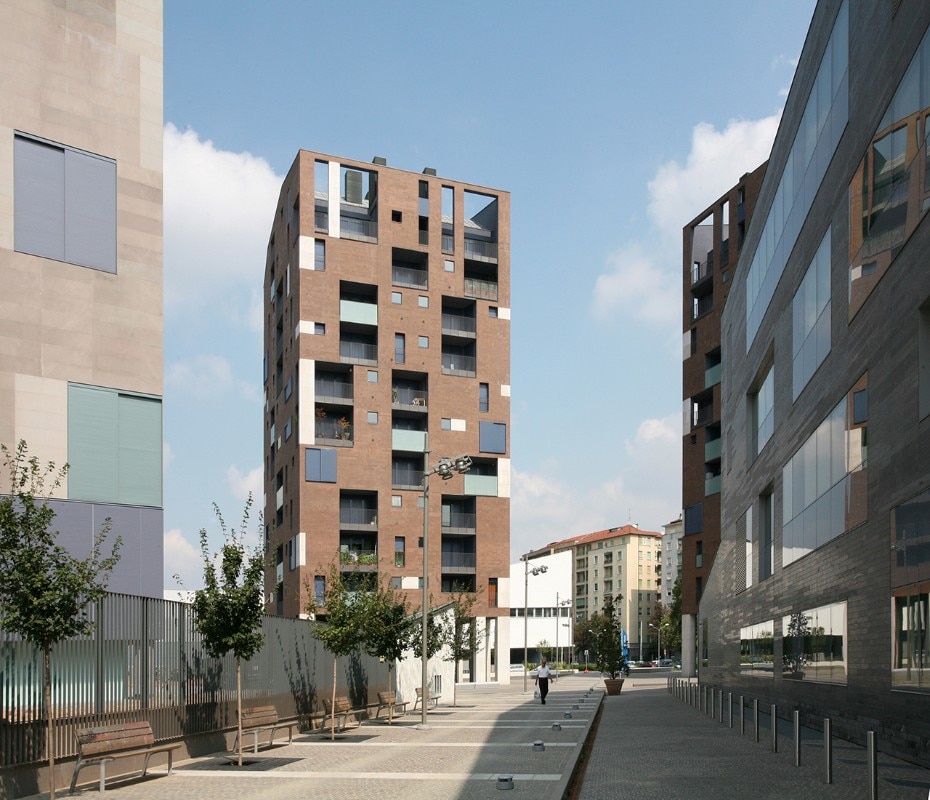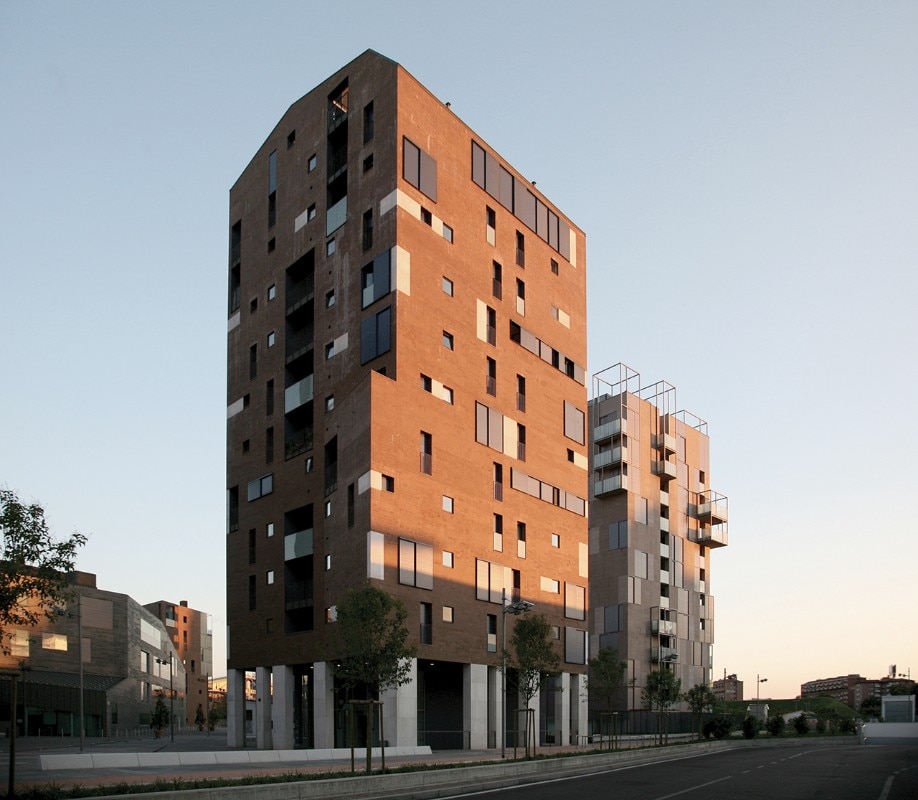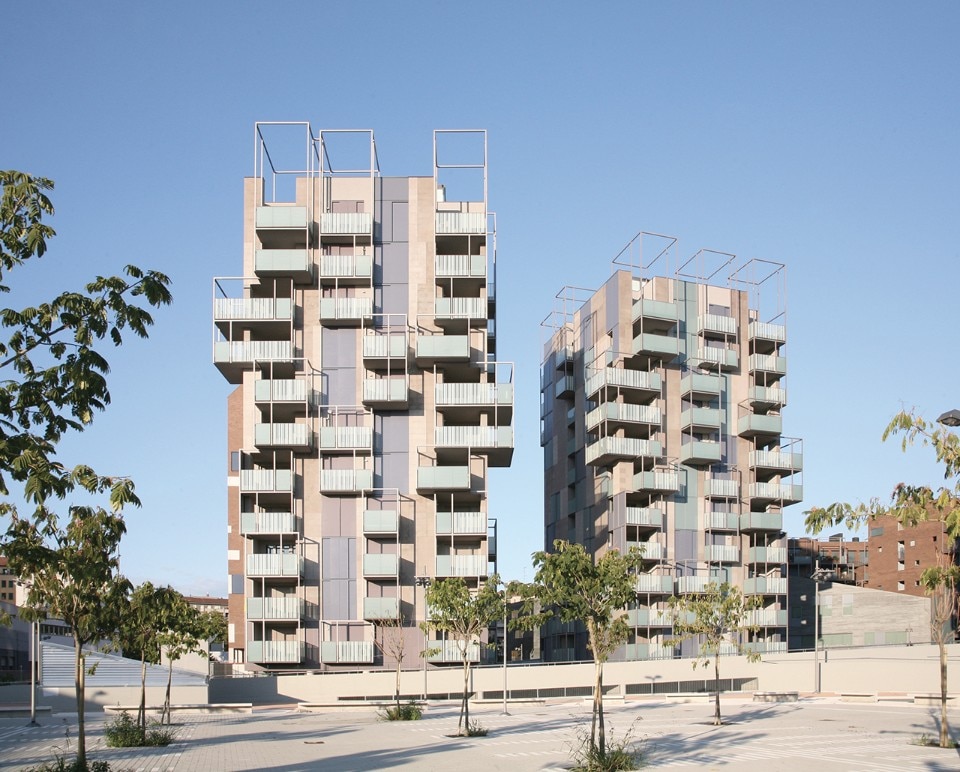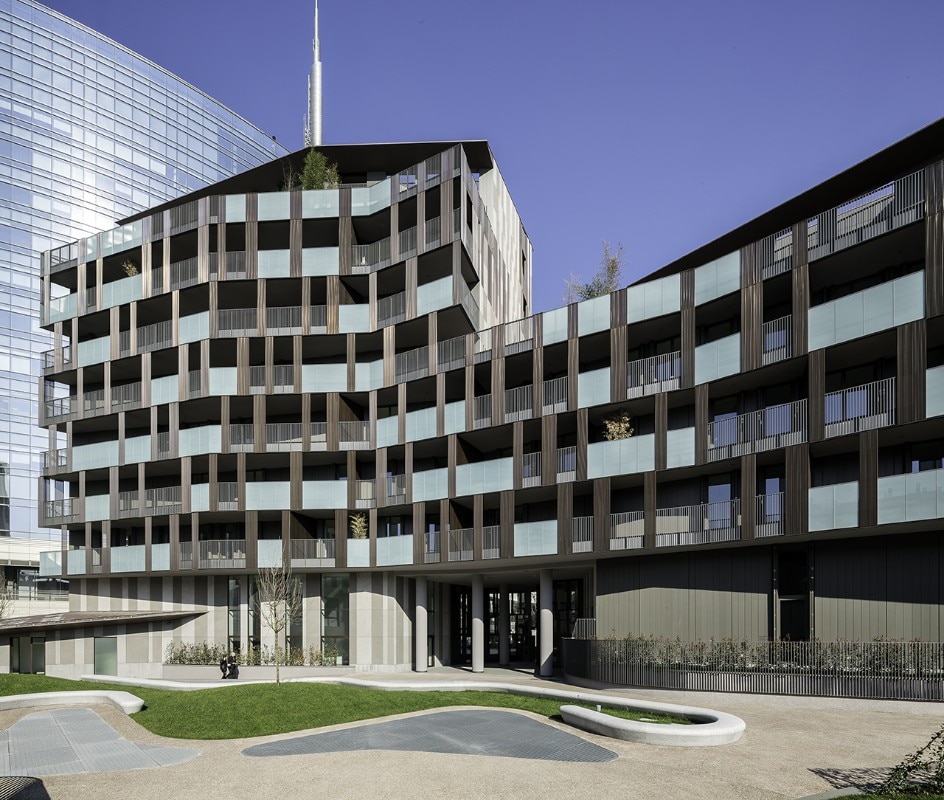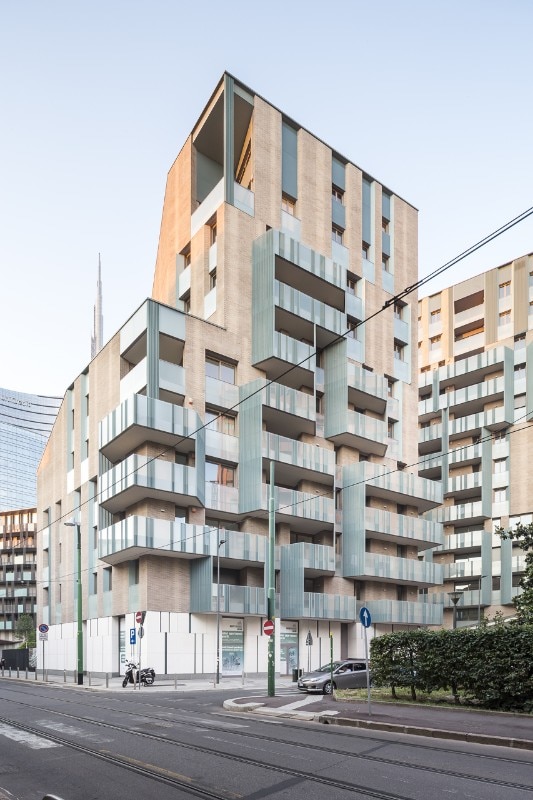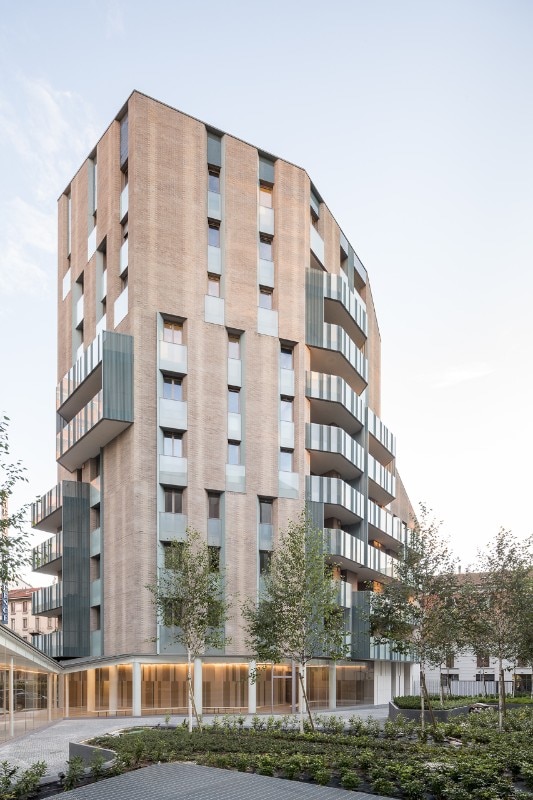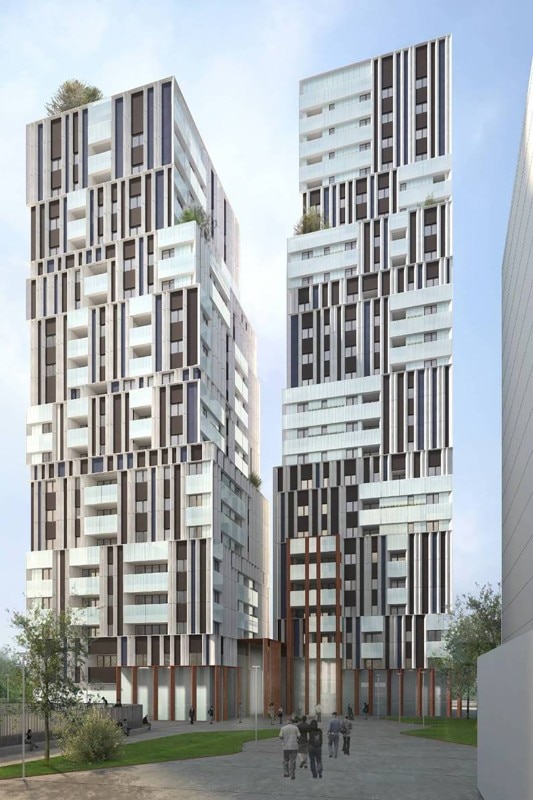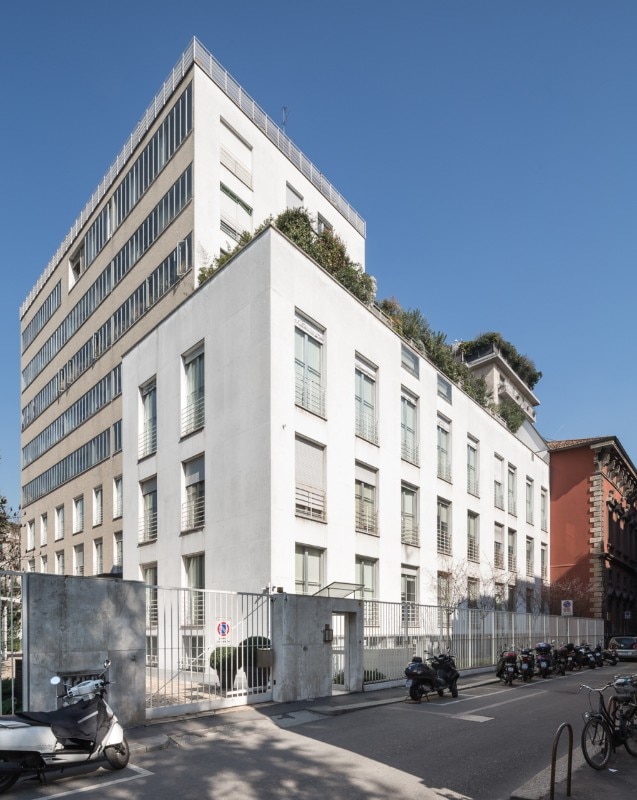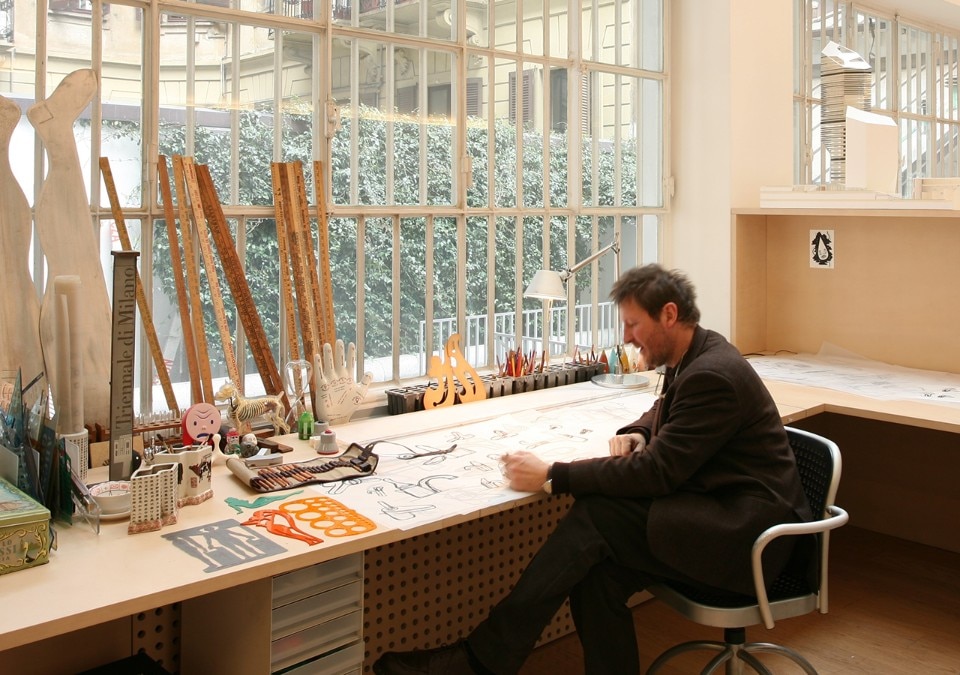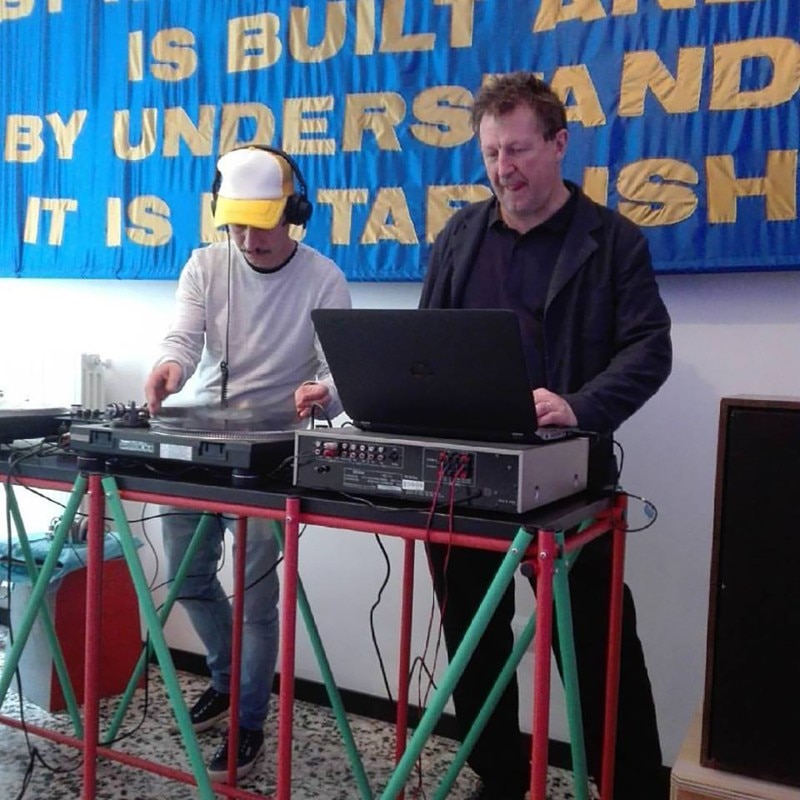This conversation with Cino Zucchi was intended as a quick comment on one of his projects, a residential building soon to be realized in Turro, in that northeastern area of Milan that a few years ago was rebranded as NoLo (North of Loreto). It evolved into an all-round conversation on the contemporary city, on the strategies and ways of observing it, designing it and inhabiting it.
With his unique prose, flamboyant and yet extremely controlled, delighted of its overabundance, advisedly filled with quotes, Zucchi alternates vertical insights on the past and present of Milan, and far-reaching excursions through the urban worlds of our times. And yet, at the very end, he returns to Lombardy and its chief town, and from the architectural masterpiece that is his home – a remarkable modernist building by Gustavo and Vito Latis – he asks himself, or better he asks us: can we imagine Milan as an indie city?
Your new project in via Valtorta adds to a long series of residential buildings that you have realized in Milan in the last 20 years. What does it mean to reflect upon the dwelling today?
Our vision of the urban reality has significantly evolved in the recent past, and yet over the last fifty years consolidated residential typologies, stemming from the Modern Movement’s research on the dwelling, have remained at the core of the real estate market. This is why it is necessary to critically rethink the trajectory that we have followed to date, to make it evolve in other directions. Nonetheless, as Douglas Hofstadter claims in his seminal article Variations on a Theme as the Crux of Creativity, quite often the metamorphosis of a well-known object leads well beyond a mere “back-to-square”.
The dwelling theme is a delicate one, but even more so is the relationship between the housing unit and the city, that a functional approach to urbanism had somewhat simplified. Large-scale neighborhood from the postwar period tried to reproduce a village-like social solidarity at the urban scale. These honorable experiments of “social engineering” through spatial mechanisms have all failed. In the metropolis, the neighborhood sharing our landing is not necessarily our friend. Contemporary researches on the so-called co-housing represent just a small part of the problem, and they are often biased by simplifications that overlook the natural evolution of people, families and social groups. The collective dimension doesn’t fit within the single building, but should probably be considered at the scales of the neighborhood and of the entire city.
A thorough reflection on the contemporary dwelling has to acknowledge the multi-mode and multi-scale nature of today’s life. At the scale of the dwelling, this means to give up the functionalist determinism that assigned a specific role to each room. From a broader perspective, it means to understand how every house relates in different ways with the dimension of the neighborhood (that is the city within a 15-minutes walk radius), with the urban and metropolitan networks (let’s say within a 50-to-60-minutes journey time on public transportation) and now even with a continental territory, easily and quickly accessible by plane or by train.
To reflect on new forms of living spaces, I often show a photograph of my 20-years-old daughter, taken while she was sleeping on the sofa, surrounded by the symbols of her existence as a millennial: a smartphone, a laptop, an empty coffee cup, the food remnants of a Deliveroo meal, an Amazon box. This image shows at once the failure of the “existenzminimum” and its contemporary, digital reinvention. It encourages us to reconsider with fresh eyes the link between the individual dimension, both private and connected, and the spaces that host it.
Among the images suggested by the PGT (the Territorial Administration Plan), one of the most successful, both for specialists and for the public opinion, depicts Milan as a “city made of neighborhoods”. It is also the most perceptible, in terms of its effects of material transformation of the city’s spaces. I think about the several projects for squares and other small public spaces. What is your opinion on all this?
It is important today to approach the concept of neighborhood not just through an architectural or urban project, but also and especially from a socio-cultural perspective: what is the relationship between a part of the city with a relatively strong historical identity and its communities? Some areas of Milan are very recognizable, such as via Paolo Sarpi, home to the Chinese community. A few foreign friends have asked me which is Milan’s “gay neighborhood”, though I have to admit that this is less crystal-clear than elsewhere in Europe. The so-called “tactical urbanism” promoted by the municipality has the virtue of implementing, with very little means, effective operations of re-signification of unremarkable public spaces, spaces of conflicts or that were simply invaded by cars and bollards. This contributes in creating identity, possibilities for citizens to identify.
Classic ethnographic studies, often underlying exoticizing or even racist biases, have consistently identified unity of space and cultural unity: climate, geography, costumes, gastronomy, religion, myths, clothing, children’s games, architecture were considered as one. On the contrary in our contemporary world, that is made fluid and connected by the internet, we witness every day the emergence of “atopic ethnicities”, united not by their belonging to the same place, but rather by some shared aesthetic-cultural codes. Negationists, vegans, militarists, punk, yuppie are human categories that we can find all over the world: they show similar psycho-social features in very distant places, while they may engage in mutual conflicts in the physical space of the same city.
The design of a “city made of neighborhoods”, in Milan and elsewhere, cannot and should not have the ambition to resituate these groups or settle them in a specific place, as they are linked by what they like and what they don’t. Can we build a neighborhood for “sciuri” [a Milanese dialect idiom that approximately translates to “gentlemen”, N.d.R.]? A neighborhood for conspiracy theorists? A neighborhood for cat lovers? This would be a fun gave if it didn’t imply disturbing and even dystopic views; let’s not forget that an ideological community and a “gated community” are just a short step away. In Ahmedabad, a Hindu taxi driver doesn’t accompany you in a Muslim neighborhood, and vice-versa, and in several South-American cities some areas are under the surveillance of actual private police forces. Therefore, hurray for the “city made of neighborhoods”, and for the “mosaic of subcultures” as long as identity doesn’t turn into social division, as long as the porosity and the continuity of the public space are preserved. This has always characterized the European city, as a result of its founding values.

Let’s return to architecture. You are considered as the main heir of the Milanese modern tradition. You authored the very first relevant monography on Asnago Vender [published by Skira in 1999, N.d.R.], you have exhibited at the Venice Biennale the works of Luigi Caccia Dominioni, you collaborate as advisor with the Fondazione Magistretti, and your projects are filled with hints to the acknowledged local masters. Why do you think the Milanese interpretation of the Modern Movement is still topical today?
As a matter of fact, I am not so Milanese: I was born here, but I had an American graduate education and I taught in several European university. Paradoxically, the Milanese modern of the period following World War II is rediscovered today and praised by the entire world precisely for the same attitude that was ostracized at the time. It was accused of being a modernity of compromise, of revisionism, for instance by Reyner Banham’s article from 1959 Neoliberty. The Italian Retreat from Modern Architecture. Today it is studied all over Europe, producing original research and even a full-fledged architectural tourism. As opposed to “hard-core” modernist reconstructions of other cities destroyed by the bombs, such as Rotterdam and Dresden, the Milanese reconstruction showed a remarkable capacity to understand the urban structure. This resulted in an intervention strategy that proved able to maintain the existing road network, through the invention of a hybrid morphology, providing modern living typologies but also sewing the surrounding fabric.
Several architectures realized in Milan between the 1940s and the 1960s are comprised of a low block aligned on the roadside, consolidating the urban front, and of a high-rise that is perpendicular to the latter, set back, and searching for light and sun. Its interiors represent a convincing “modern living”, always overlooking a garden, the way of life of an industrious and open minded bourgeoisie. This model was introduced by Piero Bottoni in the historic center’s reconstruction plans of the immediate afterwar, and was later adopted by several Milanese architects, such as Mario Asnago and Claudio Vender, Luigi Figini and Gino Pollini, or Gustavo and Vito Latis. In passing, the Latis designed the building where I live, and that I love enormously. The Milanese modern has been a “gentle” modern not only and not as much on a linguistic plan, but also and above all on a morphological plan. This is what I tried to show in the Italian Pavilion that I curated and set-up for the Venice Biennale in 2014. Its title, “Innesti/Grafting” speaks of this specific mode of intervention in the city and the territory.
The building that we have designed in via Valtorta partially reinterprets this model, with a great attention both for its specific context and for the living and environmental values of our century. The program is divided into three blocks of different height, fine tuned in close connection with sun orientation, with the fronts of the neighboring buildings, with the central green court and with the adjacent garden. This is a porous, open complex, made of well-though transparencies between the court and the city, and with the corner shop bound to stress its urban presence.
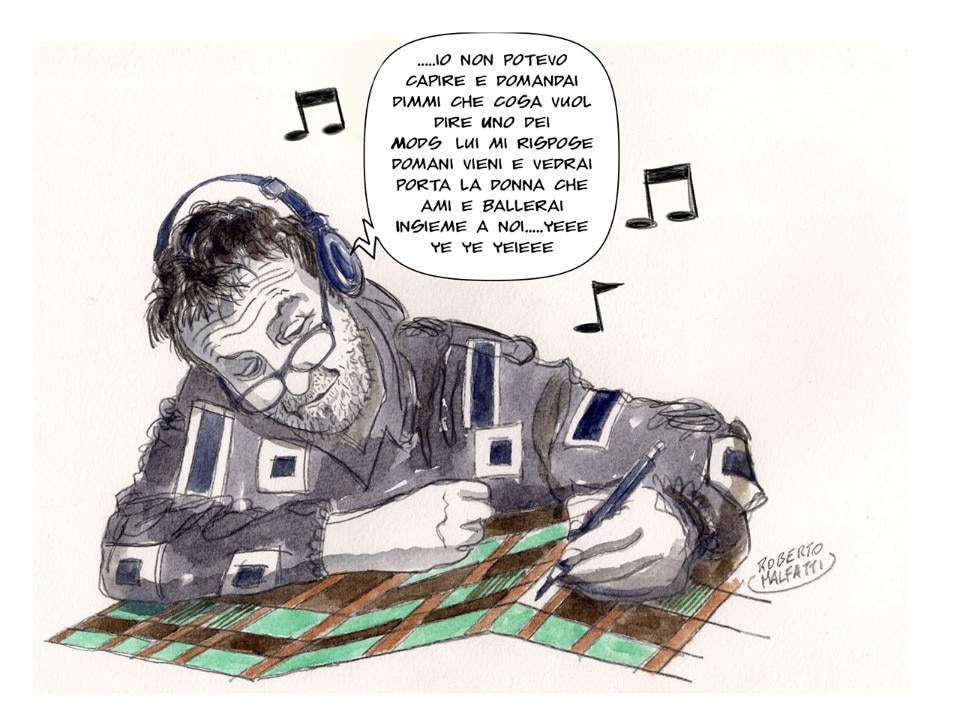
Let’s focus now on the architectural language. In the last few years, Milan has experienced a little invasion of global icon-architectures, mostly irrelevant ones. Moreover, retrofitting operations have multiplied across the city, often on modern or late modern buildings. What do you think about this process?
The average qualities of architectures built in Milan over the last twenty years is remarkably superior to buildings realized in the 1980s and the 1990s. The reason for this clear improvement is manifold: a deeper attention from the part of the public opinion, also thanks to the dissemination activity of newspapers and magazines, a deeper engagement of real estate developers, a new relationship between public administration and private initiatives and a bit of healthy competition with other European capitals. And while a few architectures built in Milan are indeed clear reproduction of a sort of “international style”, which spans today from Astana to Beijing and the Emirates, their construction standard has anyhow raised the bar. Majors and councilmen have switched gears and changed their way of communicating, and several constructors have accepted the challenge of quality and raised it to a higher level. For a few years now, the city’s landscape commission [Commissione del Paesaggio, N.d.R.] that evaluates all projects has succeeded in sharing with the other actors not just rules, but also a new urban and environmental culture. This is thanks to its first president, Pierluigi Nicolin, and those who followed. Luckily enough, after a wave of all-in-all necessary passion for foreign models, it exists today a new generation of young designers, who refuse the commercial character of “blob-like” architecture. Also, a few European leading architects, such as Herzog & de Meuron, David Chipperfield, Grafton Architects, Sauerbruch & Hutton and Rem Koolhas, have designed worthwhile buildings in the city.
While environmental values are now consistently, and for a good reason, one of the fundamental of good design, we shall not forget that architecture is a crucial part of what we could call “material culture”. Emphasis is too often placed uniquely on the procedure, rather than on the final result; and unfortunately the energetic and environmental performance often become an all-encompassing subject. Through the so-call “green-washing”, it diverts the attention from the crucial topic, that is the urban and architectural quality in its broadest meaning.
Here is where the question of the language becomes topical: if language is what allows communication between men, in order to do so it must necessarily assume a form of shared code; if the concept of urbanity, in the English language, is a synonym of good manners, then we could claim that each building communicates with the rest of the city based on an ever evolving etiquette. Each city needs some iconic buildings: among them, Stefano Boeri’s Vertical Forest has probably become the actual symbol of contemporary Milan. And yet we should not forget that the urban landscape is made of an ordinary fabric, of countless episodes that need to display an individual character but that all together have to function as musicians of an orchestra. They have to create a Sinfonie der Großstadt, that is the title of Walter Ruttman’s documentary on Berlin from 1927.
When I work at my drawing board, rather than classic symphonies I listen only to indie music: melodies that are seemingly just easy and catchy, but that actually include some well-thought dissonances, some unexpected complexity. Walter Benjamin used to claim that cinema and architecture are the true arts of the metropolis because they are both “enjoyed in a state of distraction”. This is precisely what I am trying to do in via Valtorta. I’ve designed a building that doesn’t scream out its existence, one that can be observed absent-mindedly, but whose more sophisticated details surface at a second or third glance. Against the B.I.M. dictatorship, against the green colorblindness, against a blob architecture worthy of Beyoncé, I imagined an ordinarily dandy, sophisticatedly pop building. If it was a song, it would be sang by the New Pornographers or the Belle and Sebastian.


